Below a Lego Serious Play practitioner from Chile – Claudia Gwynn of Llava Creativa elaborates a facilitation methodology. The full text of the White Paper, which was published in Spanish language on Neuronilla website can be downloaded here. Any comments welcome!
Every time we decide to build a project in any area – personal, professional or vocational, which requires us to step out of the usual path to undertake an uncertain journey, we go through a series of stages, obstacles, challenges that sometimes hinder the achievement of our dream and invite us to give up.
Llave Creativa Workshop
Should I take this job opportunity? My future depends on the career I choose and I am not clear, what will I do? I don’t know how to begin my undertaking, how I face this challenge? These are important questions that can paralyse us because they attack directly our goal and sometimes that is threatening.
How to overcome the rational barriers we place on ourselves when we have a problem considered very difficult to address? Using lateral thinking, that is, taking an even friendly alternative path which will help us to find creative solutions to complement rational analysis. In this design the tool that will lead us on this journey will be creating stories. Let us begin:
Imagine a history of which we are protagonists and is set in a house inhabited by a character named “My Challenge/Problem”. This character is almost three times bigger than us and most of the time is awful. Our goal is to transform Mr. My Challenge/ Problem into an opportunity, and we must meet and conquer it to be our ally.
What should we do to achieve that? Enter the home. But the thought of getting in and face it frightens us to the point of paralysing because we know that Mr. My Challenge/Problem knows us too well. Isn’t the first time we face this battle and it “can smell our fear of miles away”, so Mr. is ready to receive us? What to do? Clearly follow the usual path will produce more of the same and our sense of failure increase. We are trapped by and into our Challenge/Problem. But what if, contrary to what he expected we walked quietly through the kitchen, through a small window located behind the house, through the keyhole of a door?
The most likely thing is that Mr. My Challenge/Problem doesn’t see us because it’ll be very worried monitoring the front door. This would give us the chance to see it from another place, analyse the opportunities presented to us and plan an appropriate strategy. Maybe we could even visit more than once without being detected. Did you imagine?
This is the story I tell every time I introduce this methodology. Rather than talking about lateral thinking, techniques, hemispheres, etc, I tell the story of the house of Mr. My Challenge/My Problem and everyone -regardless of context, culture or age- understand what it is.
The history is full of narrations -oral and written- that tell real or fictitious situations where the characters live a series of adventures that represent the struggle of each of them to change their present and take decisions to achieve the goals that have been proposed in life. The fables, tales, myths, are ways to share lessons for our daily lives.
Development – The Creative Journey: Building Stories
Each story has a protagonist with a goal. To reach that, they should make a plan of action and make it work, but on that path they will permanently face the uncertainty and unexpected changes that will affect their plans and force them to change the direction if they really want to achieve their dream. Some will take hours, months, and even some -like the mythical Ulysses- years.
This is no different from day to day of an entrepreneur, a team, an area that decides to innovate in a company, a student who seeks to fulfil his vocation, a worker seeking employment, etc. However, if we dream to transform our lives and set what we desire earnestly we have to be creative and innovative in how we got it.
This creative technique arises from the need for people to find in their experiences of successes and failures personal learning that can be implemented in other situations. It means that after applying the technique they will be able to expand the possibilities to address a particular challenge, and also keep a very simple and easy to use tool that can transfer to their day to day and their work with others. Using this technique will transform us into writers with the power of choosing characters, build their trip, face them to obstacles and difficulties and decide their future.
Methodology
This technique is based on the Stanislavski method. Konstantin Stanislavski (1836-1938) was a Russian actor and director who worked with the Moscow Art Theatre in the early twentieth century, his method is the result of many years of efforts to determine how a person can optimize and enhance its performance in the most intangible and uncontrollable aspects of human behaviour such as emotions and creation.
In innovation we talk about prototype, in theatre is rehearsal but finally the idea behind both terms is to experiment, improvise, fail and solve problems presented to us by using various creative techniques. On the other hand while prototype /rehearsal we will strengthen our skills and know the weak areas.
Step 1 (3 minutes) – My Fears
On a sheet type a list of fears you are experiencing at this point in your life. Take your time, connect with your emotions and be sure to be honest in what you write.
This exercise is personal and if you are performing it with other people you should not share the list. (E.g. fear of facing my boss, fear of making a decision, fear of failure, fear of what people say, fear of not finding a job, afraid to talk to my parents, afraid to undertake, etc).
Remember that emotions are real messages that give us important information on how to proceed. Fear tells us about possible risks and dangers and although we should not be paralysed by it we must keep it mind and take the best of what it is trying to inform, that is, integrate and use it to our advantage. Save the list, we will use it later.
Step 2 (20 minutes) – My Story
Here are the technical elements that should be considered for writing the story. Read them carefully they will be a guide for the writing exercise. Important: As in all creativity technique, here the “everything goes” is allowed, it means that you are the creator, use your imagination and don’t limit yourself when creating.
- Where the story takes place? Define where you want to elapse this story, it can be a real place or one imagined for you: an unknown planet, an anthill, the crown of a tree, a beach, the city, etc. Also set the time of day, the season, and what you want to consider helping you start the story by placing it in a specific context. Isn’t the same a story that happens in a dawn at Antarctica to another set in the crater of Ximolion planet. The place will give particular characteristics to the story. Tips: If you are having difficulty imagining take any magazine, open it in a random page and the first thing you see use it to decide a place.
- Protagonist (What or who is? How is it?) The protagonist is the character who lives the story. Not necessarily a person, it can be a thing (shoe, tie, briefcase…) an animal (dog, cat, horse, fish…) an insect (ant, spider, beetle…) a tree, flower etc. You create and give life to the protagonist.
- Objective (What do the protagonist want to achieve?) An objective is what the protagonist wants to achieve more, his goal, his dream. This must be very powerful, almost vital, so as to compel him to overcome the obstacles that stand in his way without giving up. Once you identify the goal you should focus on why and how the protagonist will get it done. (E.g. Romeo loves Juliet, his goal is to live his love with her, so he will bend over backwards to achieve it).
- Obstacle (What opposes to the protagonist’s goal?) Once the protagonist has a goal he will start his way to achieve it, but he will encounter an obstacle. This obstacle is one of the fears of the list you wrote at the beginning. Pick one: this fear come between the protagonist and his goal, creating a conflict. (Eg. Romeo loves Juliet, his goal is to live his love with her. However, the hatred between the Montagues and the Capulets stands).
- Conflict. Once the conflict detonates the protagonist faces crossroads: on the one hand a goal that to achieve with all his might, but his biggest obstacles fear to block him. (E.g. Romeo loves Juliet, his goal is to live his love with her. However, the hatred between the Montagues and the Capulets stands, which will generate the conflict of the play and its tragic end).
- Resolution (What is the outcome of the story?) As the creator of the story you have the power to transform the experience of your character. How? Making him overcome the obstacle and writing a happy ending.
Step 3 (4 minutes) – Individual Appreciative Model Construction

Suggested material: platform and LEGO® bricks – It´s time to build!
Objectives:
- Connect with LEGO® pieces and use hands to create.
- Invite them to meet new mental models that will eventually end up displacing the old.
- Tell a story related to a challenge where the participant imagines himself in moments of achievements and live them as a reality to be filled with good energy and motivation.
- To enable the participant to engage with experiences he dreams to create.
- Let the participant to focus on the positive, not to spend energy complaining about what could not be. This lets you create recognition of yourself.
- Encourage self-confidence.
- Value the experience of others.
Step 4 – Build and Share in Couples
From what is written in step 2 and using LEGO® bricks, build a Model that tells the imagined story. They must be built on a platform. (4 minutes)
Once they finish building, the facilitator will ask them to take a moment to look the model and identify what the character learned in the challenge. They should put a red brick on that side of the building. (30 seconds)
Then they will meet in pairs (A and B) and will sit face to face with their models. First, A will share her story pointing the learning of that experience while B listens, and then backwards. (2 minutes each to tell and if necessary go in depth, ask)
Step 5 – Build and Share in Groups

Later, the couples meet other couples at tables with no more than 10 people to hear all the stories. Models will be exchanged and A will tell the story of B and vice versa. (1 minute each story)
Shared Model. In two tables work in two groups, take a medium-sized platform and placed at centre of each table. People will share the learning of each story to remember.
The group will choose one of all models, which best represents a story where a challenge is overcome and learning is obtained; they will put it at the centre and add the other models.
Each group will try to tell a Gold Story from the learning of the different stories, following concepts learned: Where the story takes place? Who it happens? What happens? What were the challenges and learning they got?
Step 6 – Share and Reflect
People build a Model that represents what they learned in this exercise (3 minutes)
If this technique is done in groups, the Facilitator asked that once they have finished writing, each author read the story. Finally the group will reflect on how to apply the experience in a new situation. This is when they recapitulate all learning obtained; therefore there is a personal but also collective enrichment by having experienced this creative process.
Summary
- List the fears felt in this period of life (personal, professional)
- Build a model with LEGO® bricks using the following steps:
- Define where and when the story happens.
- Pick a character (doesn’t matter the gender, age, etc.)
- A goal that the protagonist wants to reach and an obstacle that will generate the conflict, for it must select one of the fears of your list.
- The story must end with a happy ending.
- The story of the Model should be tell in third person singular
Translated by: Anais Gwynn. Photos and video: www.llavecreativa.cl
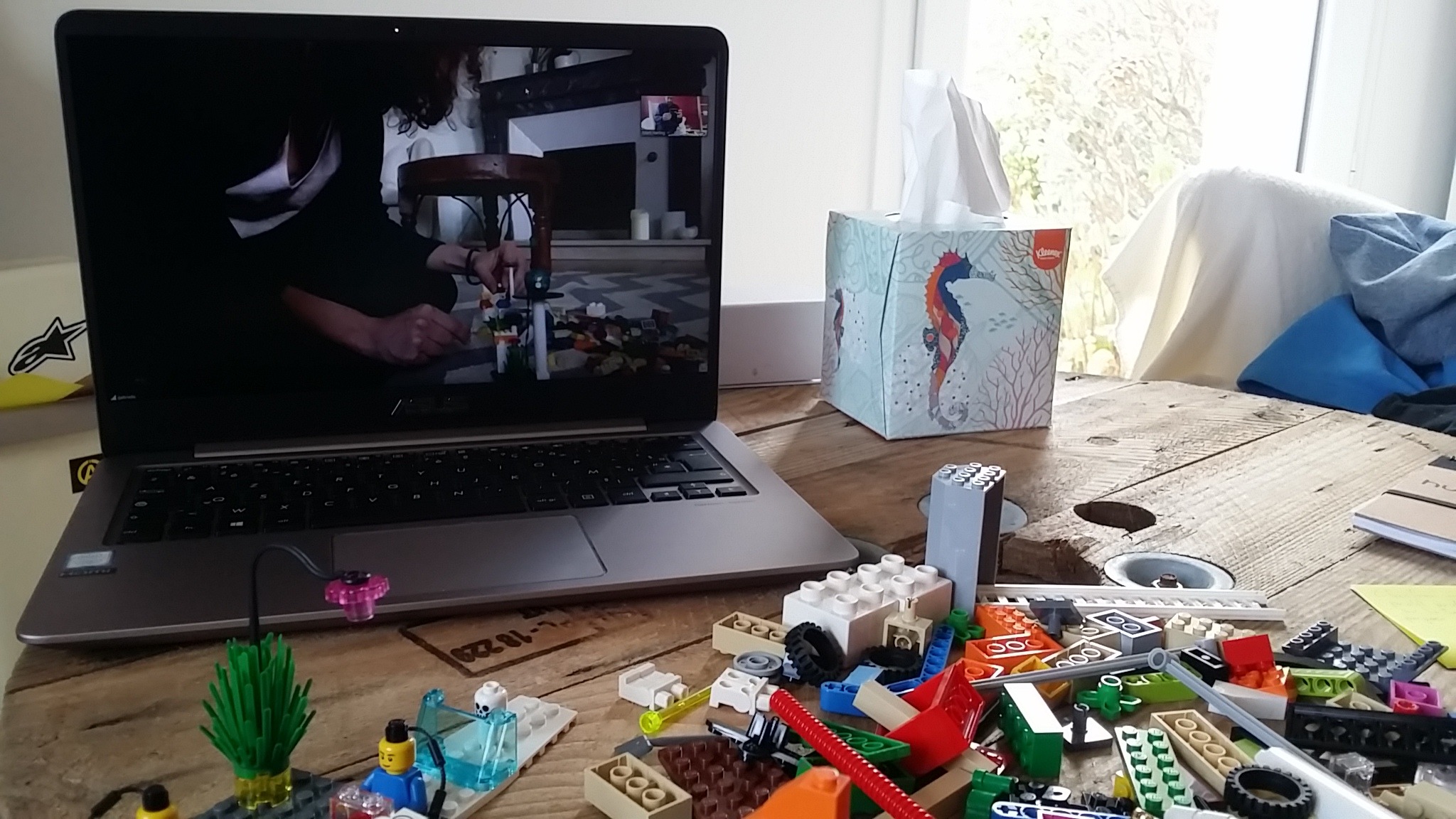

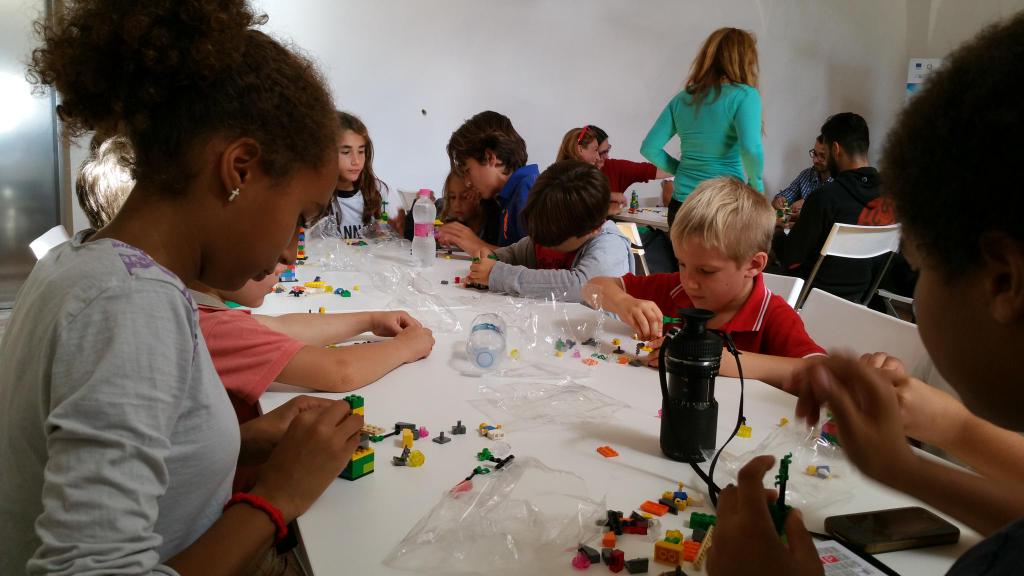
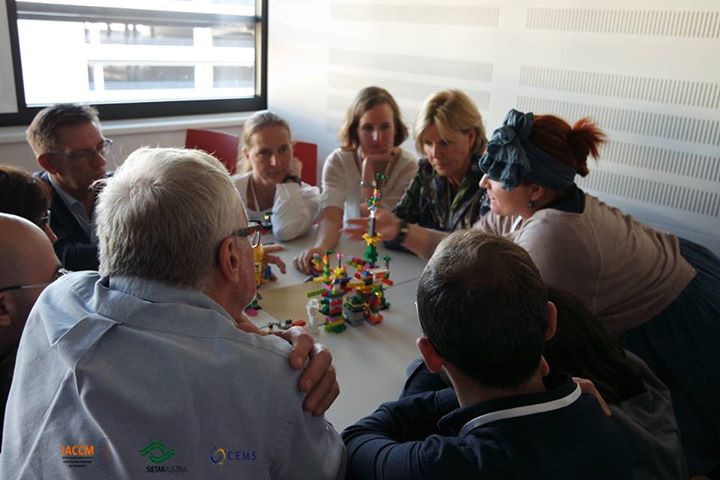


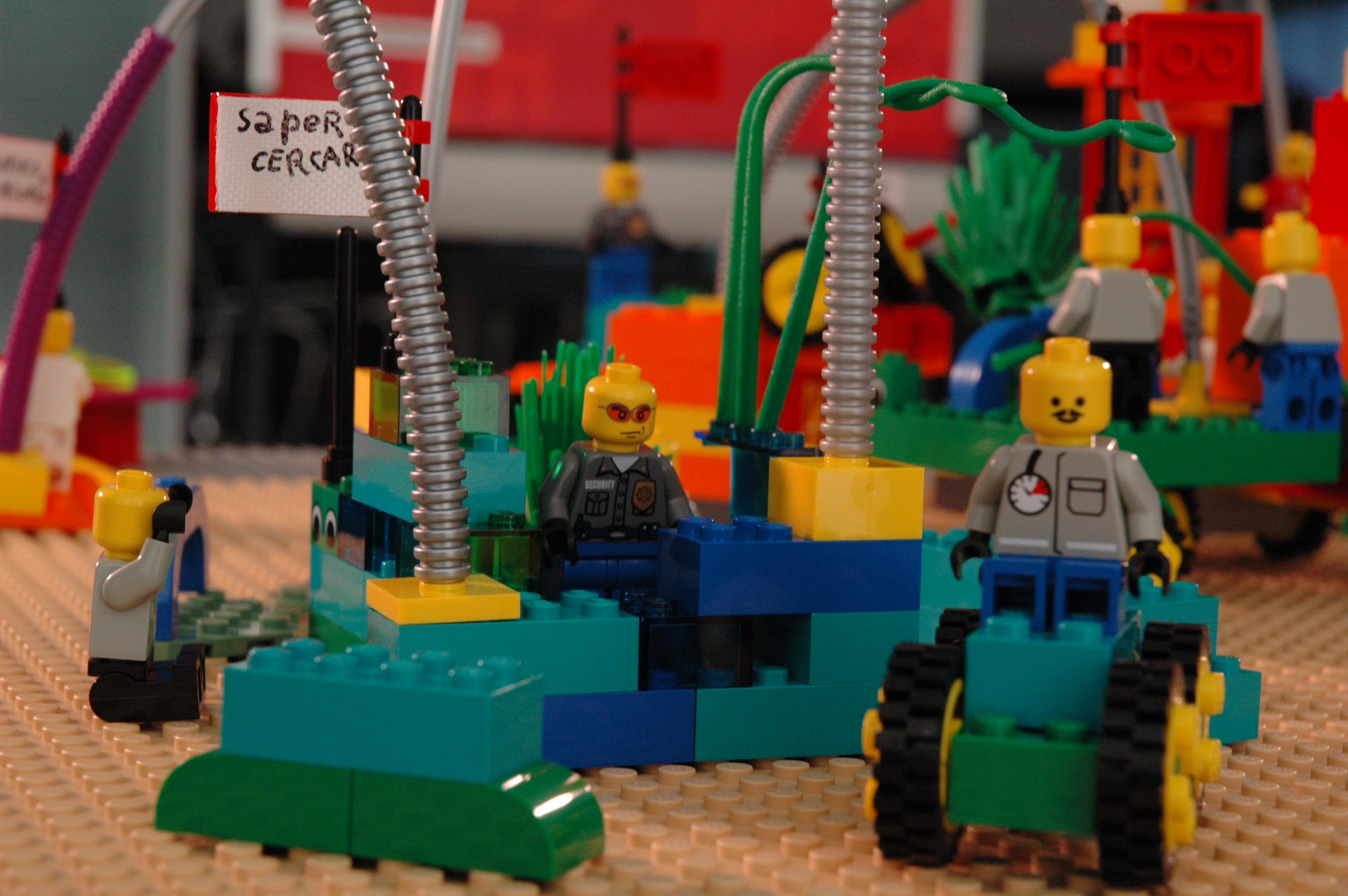
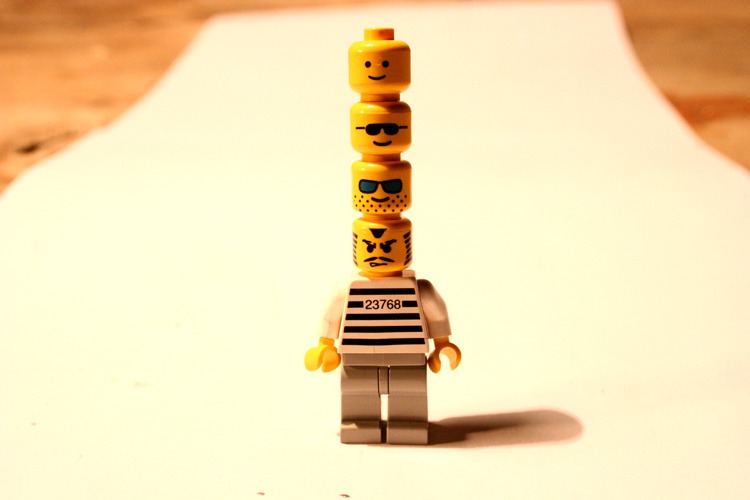

 Become a LEGO Serious Play facilitator - check one of the upcoming training events!
Become a LEGO Serious Play facilitator - check one of the upcoming training events!